Inductive Position Sensor Design Resources
Building With Inductive Position Sensors: Tips and Tools
Three Simple Steps for Building Your Own PCB
Step 1
Choose and download a sensor layout from the position sensors library.
Step 3
Build and run your system. Connect with our technical support team if you need any assistance.
Inductive Position Sensor Kits to Jump-Start Your Development
If you are not yet ready to build your own PCB sensor, our linear and rotary position sensor evaluation kits and boards make it easy to get started with the technology.
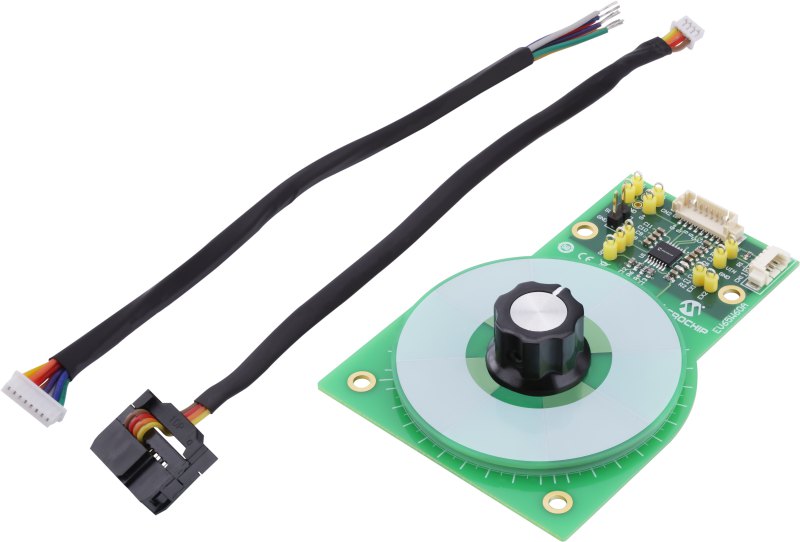
LX34070 90 Degree Rotary EVB
The LX34070 90-degree rotary EVB (EV65W60A), along with our free IPCE software, allows you to evaluate, auto-calibrate and customize this sensor to meet your application's requirements. The LX34070 is an excellent option for high-speed resolver applications.

Pro Sensor Kits
These kits come with your choice of an EVB, an IPCE programmer for accurate sensor measurement and programming and all the cables needed to interface the sensors and programmer to a computer. These programmers simplify designing, building and evaluating your own sensor applications.

Nano Sensor Kits
These kits speed up your time to market by combining a linear or rotary sensor with a programmable PIC18F microcontroller (MCU). Offering many of the same capabilities of the Pro kits, these are smaller reference designs that can be used in your end application.

Evaluation Boards With mikroBUS™ Connector
This evaluation board facilitates rapid system prototyping by combining a position sensor with the popular mikroBUS connector. Using this connector, you can attach the sensor to any microcontroller evaluation board that also contains this connector.
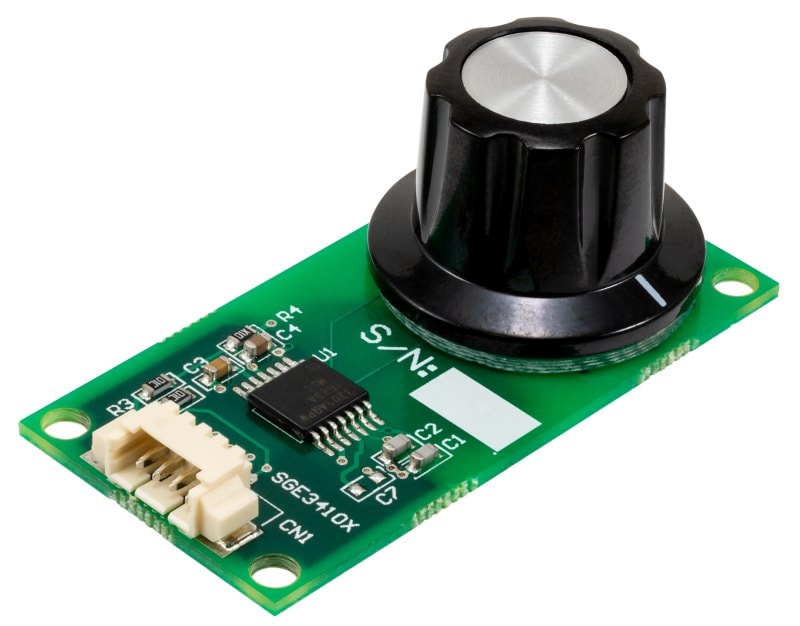
Device-Specific Evaluation Boards
Each inductive position sensor IC has several different evaluation boards to choose from. We offer EVBs for linear position sensors, angular/rotary position sensors and even redundancy. Use the provided cable to interface these boards automatically with our IPCE programmer and software.
IPCE Programmer and Software to Simplify Your Development
Providing a simple interface between an EVB and a laptop or PC, the IPCE programmer and software enable you to capture data, measure and automatically calibrate your position sensor.
Key Features
- Programs device EEPROM for custom sensor applications
- Simplified sensor output and internal debug measurements for robust sensor evaluation
- Automatic EEPROM calibration for optimum accuracy
- Stand-alone TCP/IP addressable software for interfacing with production test software
- Introduction videos to the programmer and software
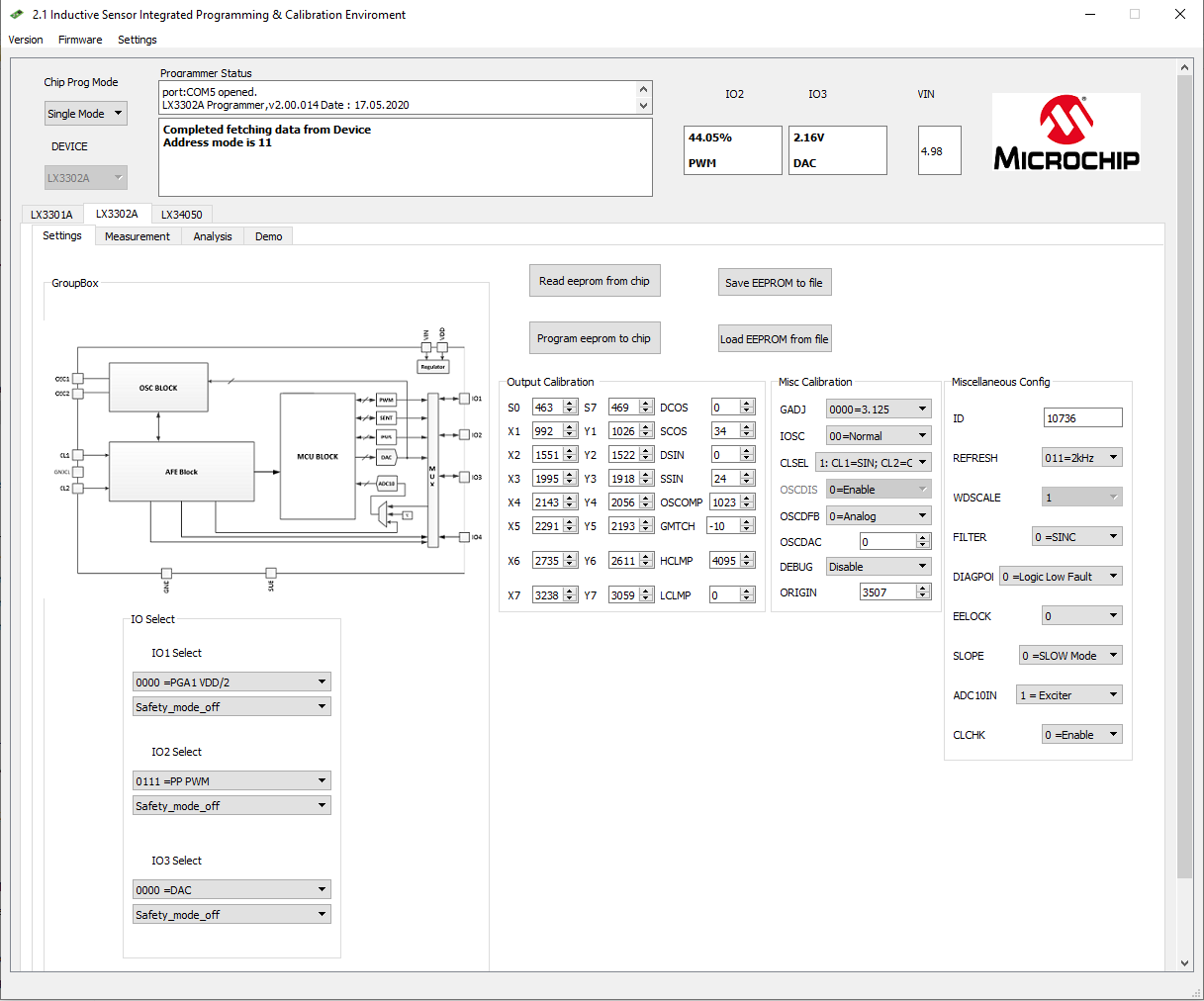
IPCE Setting Window
This window, which is the most powerful and yet simple-to-use feature of the software, provides an easy way to change the IC’s operation to meet your system requirements. You can adjust all EEPROM parameters, including I/O interface options, sampling rate and analog front end, or make small adjustments to the calibration points.
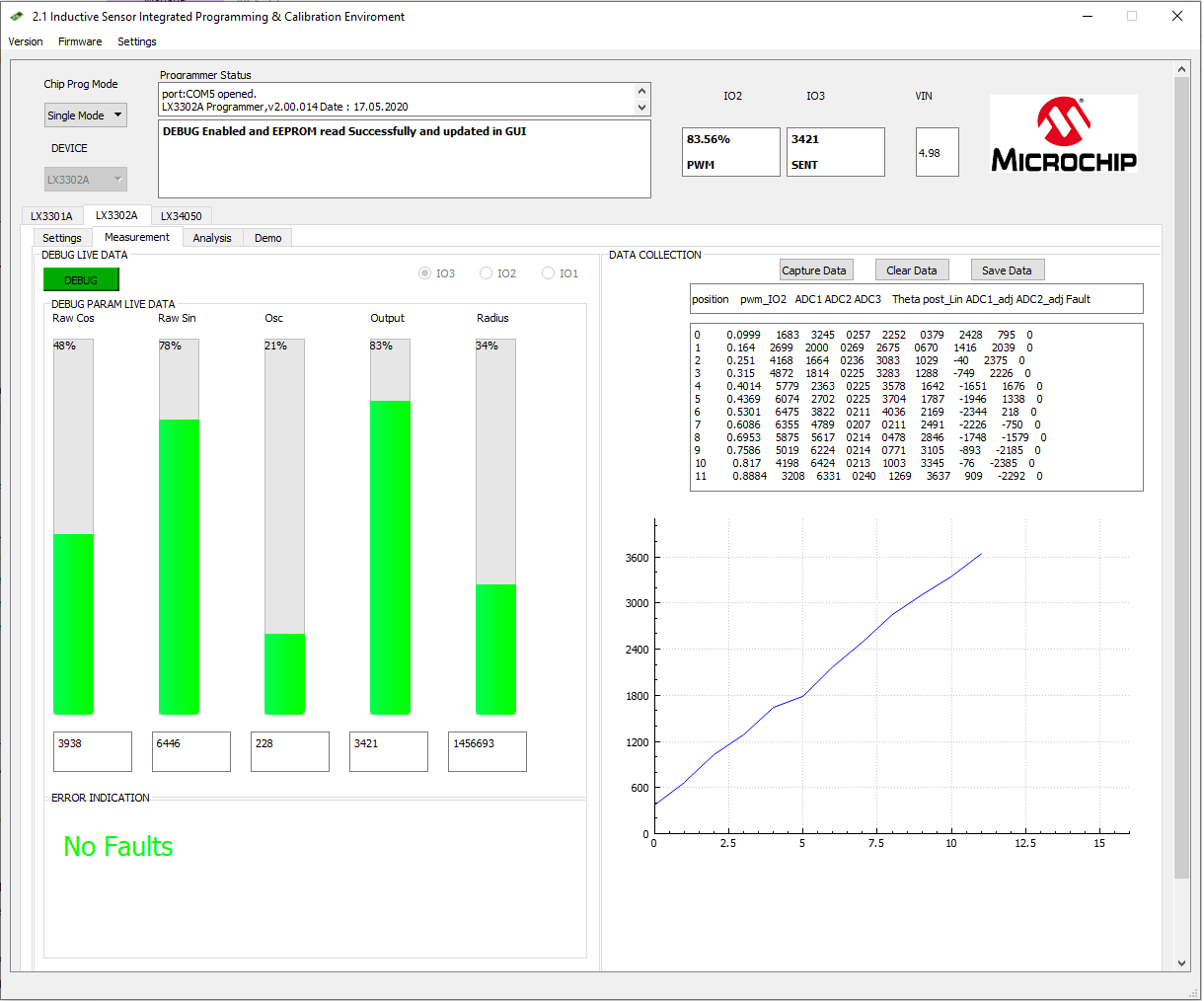
IPCE Measurement Window
Instantly capture data by clicking on the "capture data" button or do it automatically through the TCP/IP protocol. Then use the “Save Datalog” button to easily save the captured data in an Excel file. A unique sensor debug feature also allows you to capture the raw PCB sensor output, which is perfect when you want to understand how your unique mounting may be impacting the design. This mode gives you access to the internal Analog-to-Digital Converter (ADC) values, including fault diagnosis information to help you rapidly bring your sensor to production.
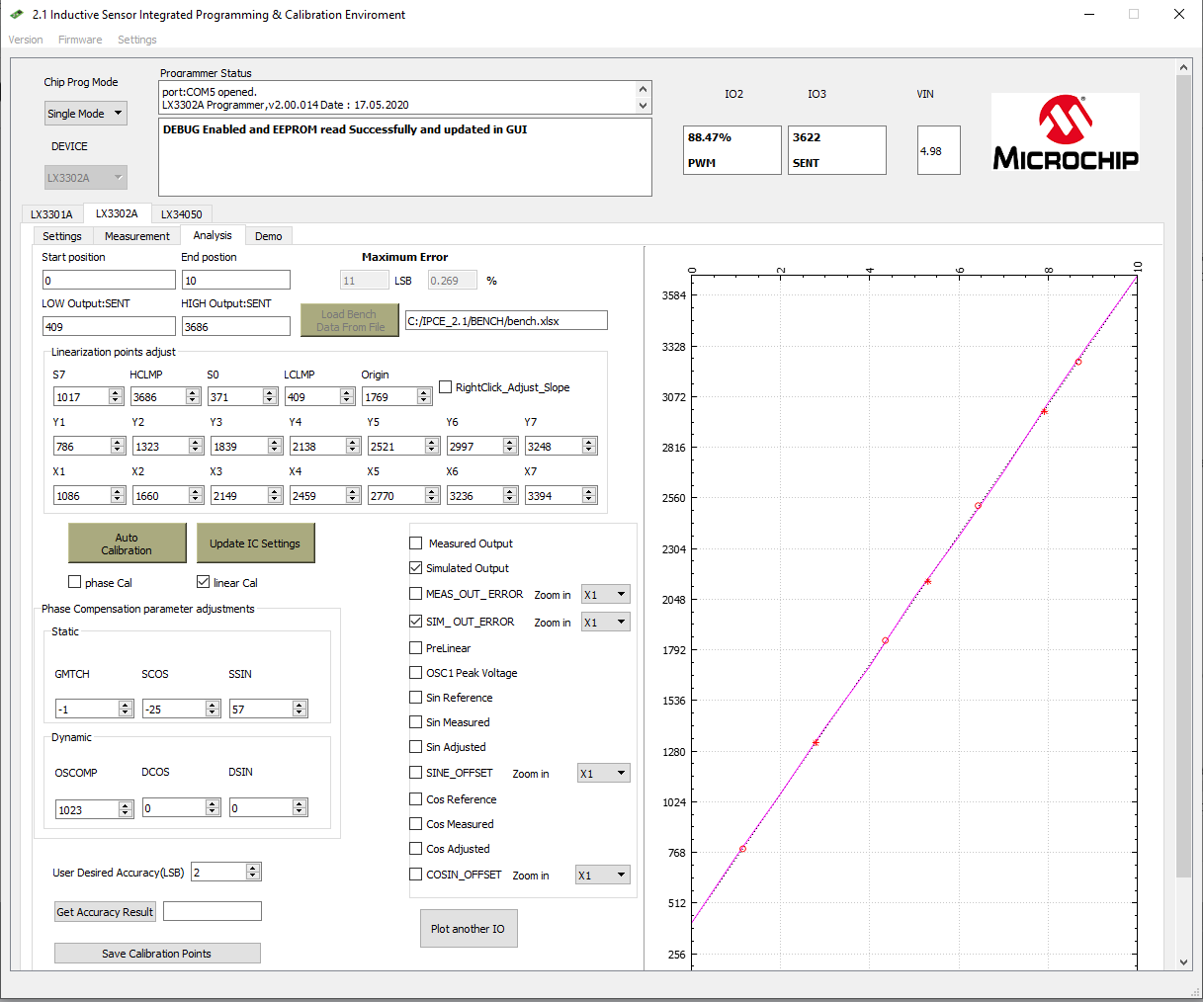
IPCE Analysis and Autocalibration Window
After measuring the sensor, use the analysis window to easily implement sensor linearization with the auto-calibration function. The software provides the optimal accuracy that can be achieved using the IC’s built-in calibration memory, or you can use an external Microchip MCU to achieve even better accuracy.
Position Sensor User Library for Creating Your Own Designs
Our Inductive Position Sensor User Library eliminates the need for you to do any equations, calculations or IC programming. Just add these PCB sensor layouts to your own board and order the right sensor IC to build your own application. Then connect to either the PWM, analog or SENT interface to the system controller and start reading position data. The sensor library offers linear and rotational sensor examples. You can use them as is or follow one of the instructions guides for modifying the examples to meet your specific requirements.

360-Degree Rotary
- Measurement range: 360 degrees
- Sensor dimensions: 12 mm diameter
- Max airgap: 1 mm
- IC: LX3302AQPW-EASY

360-Degree Rotary
- Measurement range: 360 degrees
- Sensor dimensions: 30 mm diameter
- Max airgap: 7 mm
- IC: LX3302AQPW-EASY

360-Degree Rotary
- Measurement range: 360 degrees
- Sensor dimensions: diameter of 32 mm OD/20 mm ID
- Max airgap: 2 mm
- IC: LX3302AQPW-EASY

180-Degree Rotary
- Measurement range: 180 degrees
- Sensor dimensions: 15 mm diameter
- Max airgap: 2.5 mm
- IC: LX3302AQPW-EASY

50 mm Linear
- Measurement range: 50 mm
- Sensor dimensions: 14 mm width
- Max airgap: 5 mm
- IC: LX3302AQPW-EASY

100 mm Linear
- Measurement range: 100 mm
- Sensor dimensions: 14 mm width
- Max airgap: 3 mm
- IC: LX3302AQPW-EASY

200 mm Linear
- Measurement range: 200 mm
- Sensor dimensions: 7 mm width
- Max airgap: 1.5 mm
- IC: LX3302AQPW-EASY

20-Degree Arc
- Measurement range: 20 degrees
- Sensor dimensions: 21.5 mm radius
- Max airgap: 1 mm
- IC: LX3302AQPW-EASY
Tools and Software
- Pro Kits
- Evaluation Boards
- IPCE Programmer
- Software
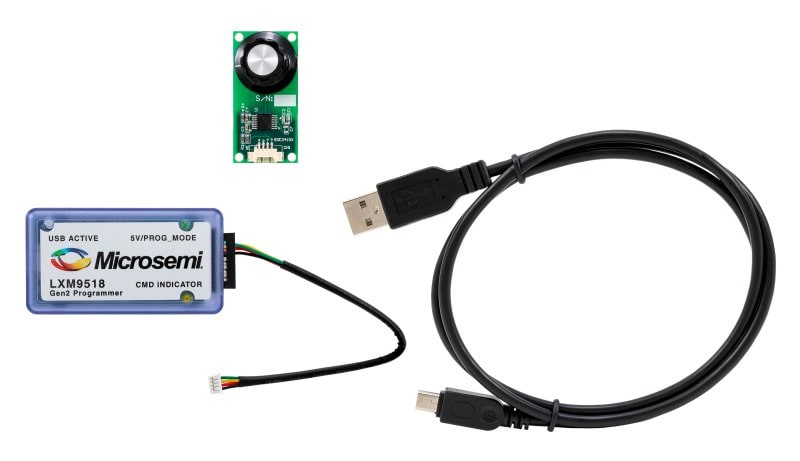
LX3301A Rotary Evaluation Kit
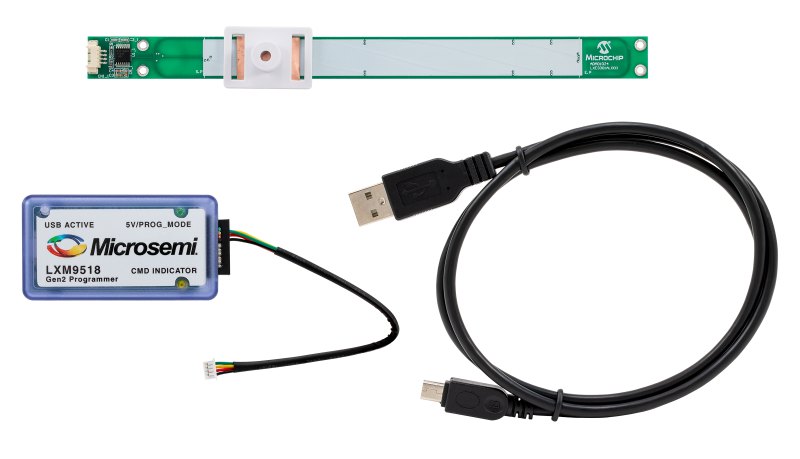
LX3301A Linear Evaluation Kit
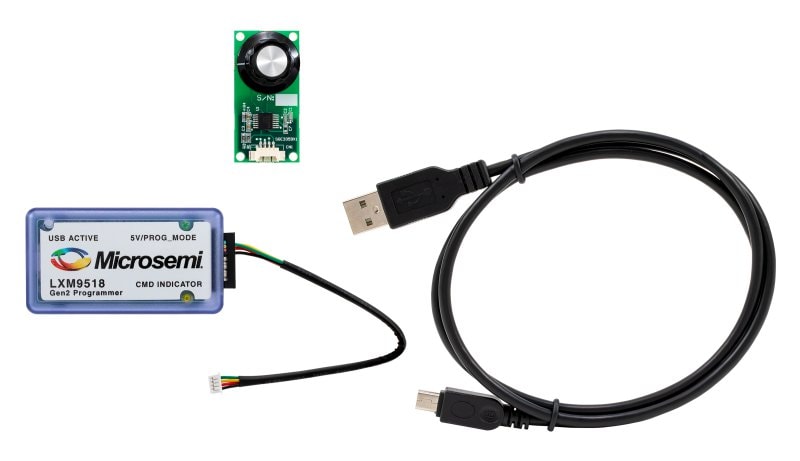
LX3302A Rotary Evaluation Kit
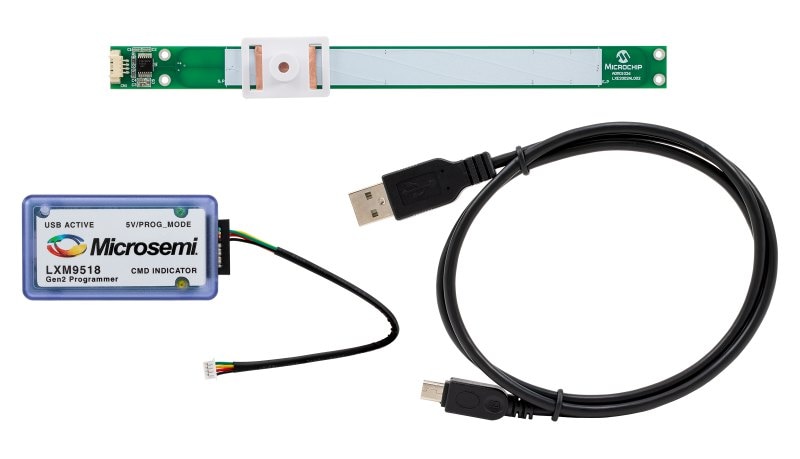
LX3302A Linear Evaluation Kit
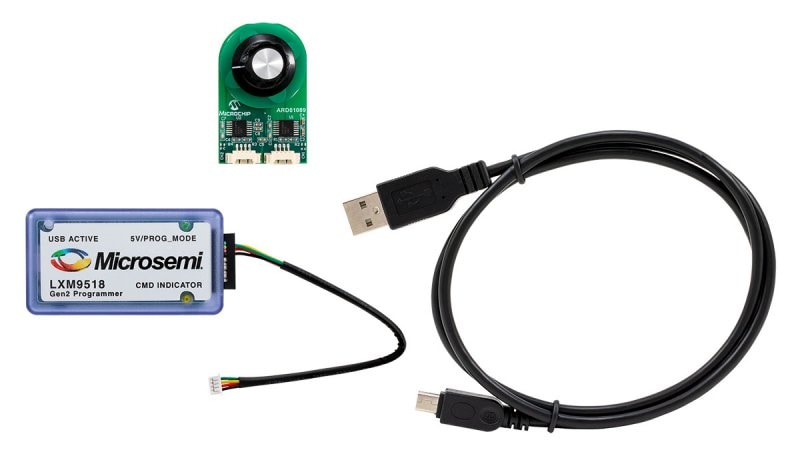
LX3302A Rotary Dual Redundancy Evaluation Kit

LX3301A Rotary Evaluation Board
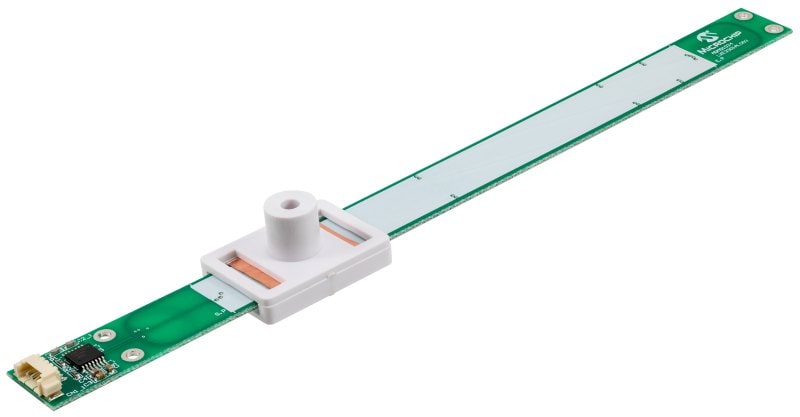
LX3301A Linear Evaluation Board
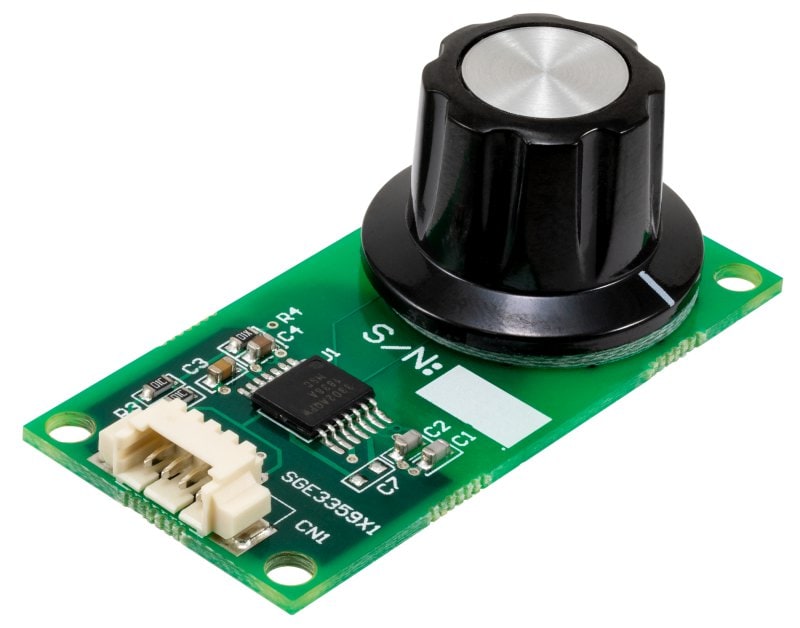
LX3302A Rotary Evaluation Board
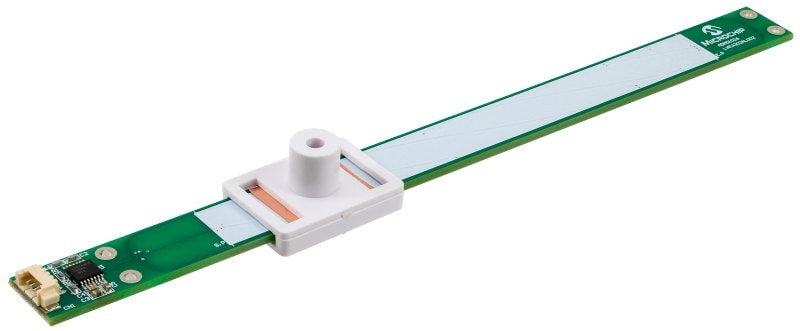
LX3302A Linear Evaluation Board
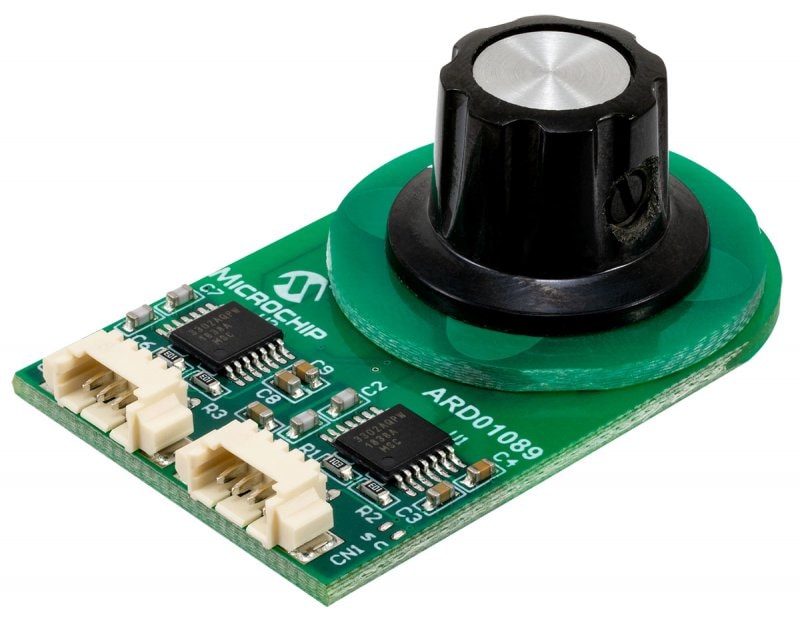
LX3302A Rotary Dual Redundancy Evaluation Board
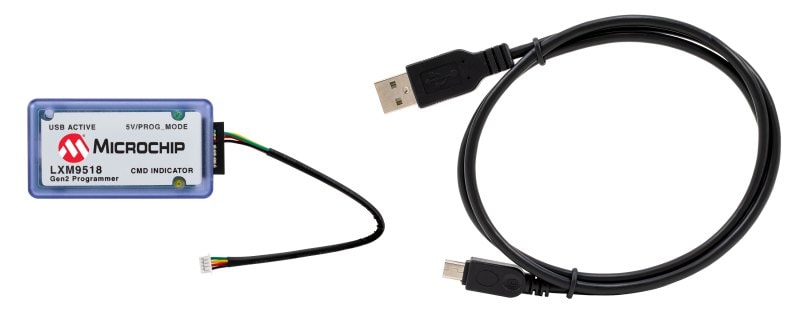
IPCE Programmer for Inductive Sensors
Miscellaneous
Documentation
User Guides
Getting Started With Inductive Position Sensors
Check out our video playlist to learn about a variety of inductive position sensor topics.